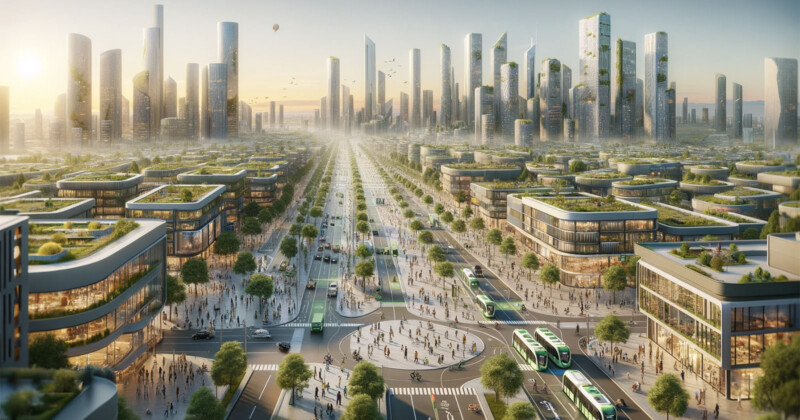People Support Car Bans When Shown AI Images of What Cities Would Look Like

Researchers have found that showing people AI images of what sustainable cities with fewer cars and more space for pedestrians could look like increases support for a supposed bill changing America’s infrastructure.
The new study published in the Nature journal found that showing people AI-generated images of American cities that depend less on cars and more on public transport and cycling garners more support for sustainable transportation policies.
The MIT Sloan School of Management presented 3,100 participants with a hypothetical $500 million bill that would replace half of all car lanes in the United States with bus lanes, bike lanes, and wider sidewalks. The subjects were shown a photograph taken from Google Street View showing a cityscape dominated by cars and then three AI alternatives showing how the bill could affect urban environments.

The participants who saw the AI illustrations of the city designed for pedestrians rather than cars were more likely to say they would support the fictional bill. Other participants who were simply shown slides with words such as “greener” and “bikeable” or rudimentary cartoons of public transport and foliages were less likely to show support for the bill.
The AI images were generated by DALL-E 2 (which has since been replaced by DALL-E 3 and is soon to be shut down). The researchers generated alternate versions of Chicago and New York too.

“Let’s help them imagine what it would actually be like to live in a car-less neighborhood, and a car-less city,” Rachit Dubey, a postdoctoral associate at MIT Sloan School of Management who studies the intersection of computer science, psychology, and climate change, tells Bloomberg.
When delving further into the data, researchers found that AI images had the biggest effect on Republican voters. The participants were asked to rate the bill from one to ten. Voters of the GOP gave the bill a rating of 3.7 when shown words like “bikeable” and 3.5 when shown the basic illustration. However, when shown the AI images that rating jumped to 4.8.
Among Democrat voters, they ranked the bill 6.7 when shown cartoons and slogans. It jumped to 7.5 — not as much of an increase as Republicans — when shown the AI images.
“By constructing these kinds of visualizations, to me, that helps to bring people onto the same page,” Rahul Bhui, a co-author of the study and an assistant marketing professor who studies behavioral economics at MIT, tells Bloomberg. “Maybe a shared vision of what it could look like, that is not as controversial.” The study’s co-authors also included Thomas Griffiths and Mathew Hardy, researchers at Princeton University.

The researchers want to look at the role images can play in shaping public policy with AI image generators offering a quick and easy way to make an illustration. PetaPixel quickly made an image of a city with fewer cars and more public transport for this article.
Image credits: Courtesy of Rachit Dubey, Rahul Bhui, Thomas L. Griffiths and Mathew D. Hardy.